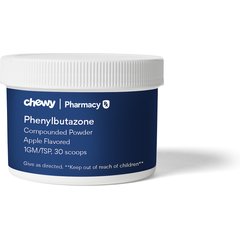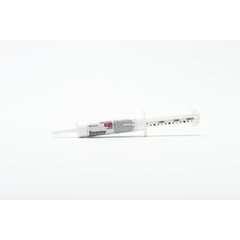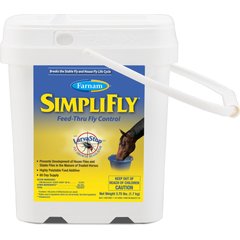Pigeon Fever in Horses
Valeria Titarenco/iStock / Getty Images Plus via Getty Images
What Is Pigeon Fever in Horses?
Pigeon fever in horses, also called false strangles or dryland distemper, is an infection caused by Corynebacterium pseudotuberculosis bacteria that occurs most often in summer and fall.
The “pigeon fever” name comes from the appearance of a hallmark abscess on a horse’s pectoral muscle that makes the chest look like a pigeon’s breast. The name is somewhat misleading, as pigeons aren’t involved in the disease process, and many horses with dryland distemper do not have a fever.
Abscesses can occur anywhere on the body, but the chest is the most frequent location. The lymph nodes, where bacteria like to multiply, are deep and can swell to create large open wounds once they burst.
If your horse has a large lump along the lower midline or has a draining abscess, it’s safest to separate your horse from others and immediately call your veterinarian out for a visit. This bacterium can be easily carried from one horse to another by flies or by contaminated grooming materials.
Types of Pigeon Fever in Horses
There are three main categories of pigeon fever in horses:
-
External abscesses are the most common form of pigeon fever in horses by far. While abscesses are most common in the pectoral region, they can occur anywhere. Some studies have shown that over half of external abscesses occur in the chest muscles. Horses with external abscesses occasionally develop a fever, are lethargic, or become stiff in the front end.
-
Internal abscesses are slightly less common; they usually occur in the kidneys, lungs, liver, or spleen.
-
Ulcerative lymphangitis is the rarest form of pigeon fever. This involves an infection of the lymphatic system. Because the lymph system does not always circulate efficiently in the relatively thin legs of a large animal, the infection tends to congregate in the hind limbs, which leads to severe swelling and open, draining sores on the legs.
Symptoms of Pigeon Fever in Horses
In addition to abscess or lymphangitis that may be present, other possible clinical signs of pigeon fever in horses include:
-
Decreased appetite
-
Fever
-
Lethargy
-
Colic, either acute (sudden) or chronic
-
Increased respiratory rate or effort
Lameness, usually in the front end, due to swelling and pain of the chest limbs in traditional cases of pigeon fever. Lymphangitis typically occurs in one or both back legs, and also causes severe discomfort with the puffy infection.
Causes of Pigeon Fever in Horses
Pigeon fever is caused by the bacterium Corynebacterium pseudotuberculosis, which lives in the ground and can survive there for several months, or live for a shorter time on materials like shavings and hay.
Bacteria then enter the body through small breaks in the skin from a contaminated environment or via fly transmission. The chest and ventral midline are a common feeding place for flies, as horses have a harder time deterring them by swishing the tail or stomping.
Flies can also deposit the bacteria on wounds already present. Once the bacteria enter the bloodstream, they travel to local lymph nodes where they begin to multiply and create an abscess, which may not appear until a month after the initial infection.
How Veterinarians Diagnose Pigeon Fever in Horses
Diagnosis of pigeon fever in horses is usually made by culture from a swab or sample of an abscess from the horse.
If a horse is experiencing vague colic symptoms, fever, or other signs of illness, an ultrasound may also be performed. An ultrasound might reveal abscesses present in the lungs or other organs that have been caused by the bacteria. For horses with ulcerative lymphangitis, a swab or small biopsy may be used for bacterial culture.
Other laboratory testing that can be helpful for diagnosis includes a synergistic hemolysis inhibition (SHI) antibody test, which checks the blood for antibodies produced against the toxin made by Corynebacterium pseudotuberculosis.
Treatment of Pigeon Fever in Horses
The mainstay of treatment for external abscess pigeon fever in horses is supportive care to speed up the maturation, rupturing, and draining of the abscess or abscesses. This is usually done with warm compresses, poultices, or a lancing of the abscess by your veterinarian.
While pigeon fever isn’t a traditionally contagious disease, draining abscesses are a source of bacteria spread, so it’s important to keep any infected horses away from others while being treated. Flies in an established, contaminated environment can both be sources for the bacteria to spread to nearby horses.
It’s also important to not share grooming or other materials between horses, and to wash your hands after handling a horse with pigeon fever. Humans can also be infected with this bacteria, although it is rare.
If you have come into contact with pigeon fever abscess fluids and become sick, seek medical care as soon as possible.
If a horse has a fever, they may be prescribed non-steroidal anti-inflammatories (NSAIDs) such as phenylbutazone or flunixin meglumine to help lower temperature, aid with decreased appetite, or assist with pain due to lameness. Antibiotics are not recommended for external abscess pigeon fever, as this can prolong the time it takes for an abscess to mature and rupture.
For internal abscesses and lymphangitis, however, long-term antibiotic therapy is the primary form of treatment. Hydrotherapy, leg wraps, and physical therapy may be warranted for horses with lymphangitis.
Recovery and Management of Pigeon Fever in Horses
Recovery from external abscess pigeon fever is typically uneventful and can take up to a few weeks with at-home management. While in recovery, horses with pigeon fever should be isolated from other horses to prevent spread of the bacteria into the environment and minimize fly transmission.
Horses with internal forms or lymphangitis may require more intensive care and full recovery can take several months.
Depending on the location of internal abscesses, horses may require hospitalization for a period for supportive care, which may include oxygen if the lungs are compromised, or fluids in addition to antibiotics.
Horses that develop septic joint infections typically have a poor prognosis unless aggressive treatment and joint flushes are instituted early on.
For horses that contract ulcerative lymphangitis, they may be prone to episodes of repeat lymphangitis in the future due to stretching of the lymph vessels that occurs with pigeon fever. Appropriate exercise after the infection is healed can help promote appropriate lymph flow up and down the limbs.
Other possible secondary complications from pigeon fever include:
-
Decreased lung function, which can lead to exercise intolerance
-
Decreased kidney or spleen function
-
Synovitis (inflammation of the joint-lining synovial membrane)
-
Systemic septic infection, which can be fatal
Prevention of Pigeon Fever in Horses
While there is no vaccine for pigeon fever in horses, it can possibly be prevented through good environmental management.
Keep stables as clean and airy as possible to minimize flies. Fly deterrents such as fly spray, sheets, masks, and daily supplement feedthroughs can also decrease the chances that this bacteria can be deposited onto open wounds or scratches on your horse.
Groom your horse daily and monitor for any cuts or abrasions. Have your veterinarian examine your horse promptly if they begin to develop any worrying clinical signs.
Pigeon Fever in Horses FAQs
How long does pigeon fever last in horses?
Uncomplicated cases of external abscess pigeon fever usually resolve in a few weeks. Horses with internal abscess or ulcerative lymphangitis may require treatment for up to several months to fully resolve clinical symptoms or abscesses.
Is pigeon fever in horses contagious?
While pigeon fever isn’t considered a traditionally contagious disease, bacteria can easily be spread from horse to horse through environmental exposure or by biting flies. It’s important for horses with pigeon fever to be isolated from others to prevent the spread of bacteria to others by flies or environmental contamination, and that the quarantine area be cleaned thoroughly after the infection.
Is there a vaccine for pigeon fever in horses?
At the time of this publication, there is no vaccine for pigeon fever in horses.



